One of my millennial sons has framed IBM as “the Google of my generation”. My career path included assignments and visits to the IBM Advanced Business Institute, in Palisades, NY. Mentions of that team, and the Palisades Executive Conference Center where it was located, have mostly disappeared from the Internet. As one of the younger IBM professionals to have known the ABI, I can provide some history. (If friends want to correct me, I welcome that!)
- 1. The Palisades Executive Conference Center opened in 1989
- 2. The Executive Consulting Institute from 1993 was instrumental in education for IBM Consulting Group
- 3. The Advanced Business Institute offered courses for customer executives 1989-2004
While the Facebook page for the IBM Palisades Executive Conference Center has recent additions, the venue hasn’t had that title for some years.
1. The Palisades Executive Conference Center opened in 1989
IBM Palisades is not to be confused with the IBM Learning Centre in Armonk, that was opened in 1979, a facility primarily for the (internal) management development of IBM executives. IBM Palisades is also not the Thornwood Conference Center in Westchester County, opened in 1985, that was more often used for customer technical briefings.
IBM Palisades was originally designated for customer executive education, i.e. CEOs and VPs on corporate retreats hosted by IBM. The grounds are well-secluded, and easy to secure. The site is on the west side of the Hudson River, which most people would presume as being in New Jersey. Palisades, driving north on Route 9W, is the first hamlet in New York State, west of Tallman Mountain State Park. There was a heliport, although I never saw anyone arrive that way.
The site was designed by Romaldo Giurgola, an architect described as “a leading member of the Philadelphia school of architects, which included Louis Kahn and Robert Venturi“. The building was striking, with a stream running through the middle. Classrooms were on the south side of the stream, and the homestead on the north.
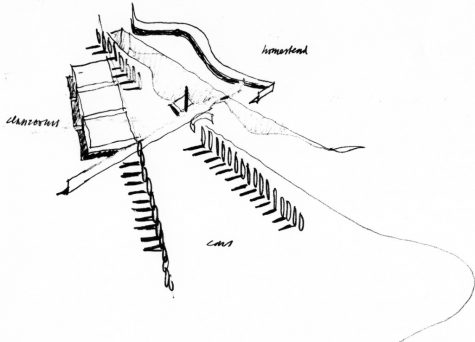
After the opening in 1989, a local village newsletter described the IBM Palisades Advanced Business Institute. (This building and team at that time were labelled the same, prior to the facility being used for additional functions).
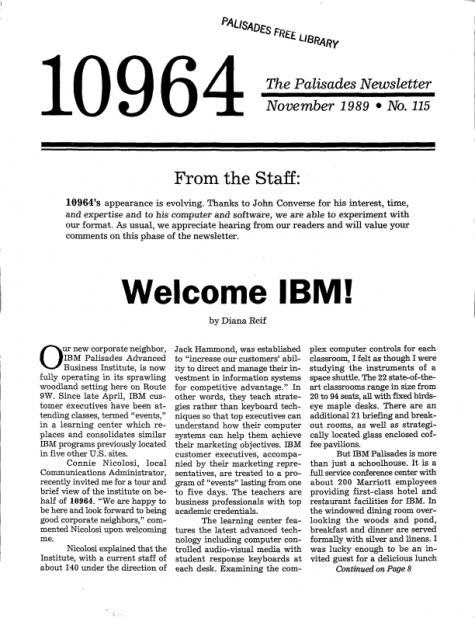
We used to joke that Palisades is where a CFO promoted to CIO came, to learn to push a mouse. More accurately:
… the Institute, with a current staff of about 140 under the direction of Jack Hammond, was established to “increase our customers’ ability to direct and manage their investment in information systems for competitive advantage.” In other words, they teach strategies rather than keyboard techniques so that top executives can understand how their computer systems can help them achieve their marketing objectives. IBM customer executives, accompanied by their marketing representatives, are treated to a program of “events” lasting from one to five days. The teachers are business professionals with top academic credentials. [Reif 1989, p. 1]
A visiting professor said that environment had cues reminiscent of Harvard Business School classrooms. Each classroom in the south wing had big doors shutting out distractions from learning. At scheduled breaks, refreshment stations in the corridor encouraged contemplation, windows overlooking a calming view of the stream and woods.
The learning center features the latest advanced technology including computer controlled audio-visual media with student response keyboards at each desk. Examining the complex computer controls for each classroom, I felt as though I were studying the instruments of a space shuttle. The 22 state-of-the-art classrooms range in size from 20 to 94 seats, all with fixed birds-eye maple desks. There are an additional 21 briefing and breakout rooms, as well as strategically located glass enclosed coffee pavilions. [Reif 1989, p. 1]
At Palisades, IBM was sometimes interpreted as “Instruction Between Meals”. Breakfast and lunch had selections from a cafeteria line, with waiters offering beverages at the tables. Dinners were in the style of a full-service restaurant, and reservations for favoured seating could be booked in advance. I was told that this venue was a penultimate assignment for chefs, before they went on to the flagship hotel location in New York City.
But IBM Palisades is more than just a schoolhouse. It is a full service conference center with about 200 Marriott employees providing first-class hotel and restaurant facilities for IBM. In the windowed dining room overlooking the woods and pond, breakfast and dinner are served formally with silver and linens. [….] [Reif 1989, p. 1, 8]
Honouring traditions of Watson chairmen traditions, a no-alcohol policy was enforced on the premises from 1989. With the change in leadership in 1993 to Lou Gerstner as CEO, “prohibition” was repealed for customers. To balance off calories gained from fine dining and snacks, fully-staffed exercise facilities were downstairs on the ground floor of the north wing.
Although there are designated smoking areas, the entire facility is otherwise smoke free, reflecting current health consciousness. A fitness center, featuring a lap pool, racquetball courts, workout machines and jogging tracks, has a professional staff and is operated by Johnson and Johnson Health Management. [Reif 1989, p. 8]
The experience was relaxed business casual. Decor was a Scandinavian feeling of contemporary minimalism, with the highest-quality design choices.
My impression of the entire institute was that of understated elegance and comfort for IBM customers. The atmosphere reminded me that, in spite of the many luxuries, the purpose here is clearly business. From the pinkish kerfed brick and teak exterior to the mahogany and maple interiors, architect Mitchell Giurgola’s building is beautiful and blends naturally with its wooded environment. Artwork, displays, a library and other amenities add to the comfort and business-like atmosphere of the surroundings. But nature is not forgotten, for the day I was there everyone was admiring a pair of recently acquired trumpeter swans who have joined ducks and fish in the pond flowing under the windowed bridge joining the education and residential wings. All of the services are without cost to IBM customers. [Reif 1989, p. 8]
I joined IBM in 1985. Nine years later, I would be an attendee of classes at Palisades.
2. The Executive Consulting Institute from 1993 was instrumental in education for IBM Consulting Group
In October 1992, IBM Consulting Group was announced. While others in the industry considered alternative names for consultancy, the IBM brand and reputation gave an advantage that any executive bearing that business card had sufficient credibility to get a meeting with practically any CEO.
The International Business Machines Corporation announced yesterday that it had started the I.B.M. Consulting Group, a worldwide concern with a staff of 1,500, making it immediately a large competitor in the crowded field of business consulting.
The new unit offers both general business consulting and technical consulting in specialties ranging from computer networking to manufacturing logistics.
I.B.M. started putting its consulting group together roughly 18 months ago, when Robert Howe was recruited from Booz-Allen & Hamilton, a large management consulting firm, where he was a senior vice president.
The group’s staff is made up of both specialists reassigned from other parts of I.B.M. and outside recruits from consulting and accounting firms. About 600 professionals are in the general business consulting area, while the other 900 are in so-called functional consulting, which is weighted toward computer-related fields. [….]
As a broad-based consultant, I.B.M. is competing against a bevy of rivals in different niches of the consulting market, including McKinsey, Boston Consulting, Booz-Allen, Bain, dozens of specialized consultants, and the consulting arms of the Big Six accounting firms. [Lohr 1992]
Howe assessed IBM as having an ample supply of smart employees, but those individuals lacked practical consulting skills. The led to formation of the Executive Consulting Institute, colocated at Palisades with the Advanced Business Institute. Significantly, the first issue in 1993 of the IBM Systems Journal focused on management consulting articles.
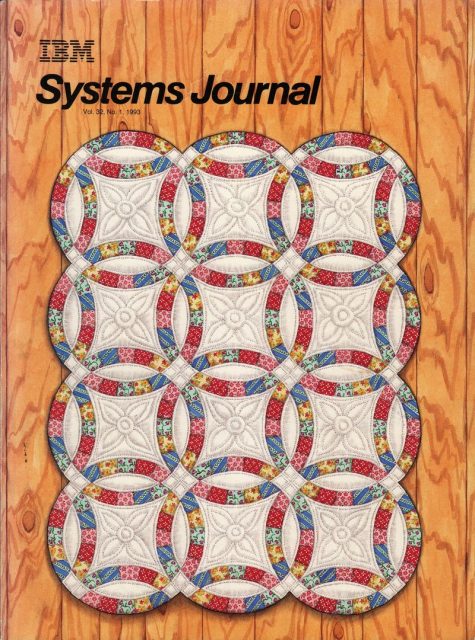
In the papers of this issue, the theme of business transformation through information technology takes this Journal and its readers into a new area that builds on both I/T and business management. It is expected that readers with an interest in either aspect will find these papers valuable, because they show how IT and business management are becoming interdependent and affected by each other, and they demonstrate the principles, practices, and experiences of this emerging area of study. The order of the papers supports the following general outline for the issue: the new model for business transformation, extensions of the model and application of the model to real businesses, related and complementary models and their application, and the infrastructure supporting the use of these models. That infrastructure includes the capabilities of the IBM Consulting Group, as discussed in the final paper, and the educational resources of the IBM Advanced Business Institute in Palisades, New York; Dallas, Texas; and Los Angeles, California. [Hoffnagle 1993, p. 2]
The resources invested into consulting skills were significant. Every consultant received three weeks of in-person, onsite training at Palisades, including:
- Issues-based consulting method
- Pyramid principle report creation
- Team roles
- Principled negotiation
After that, there was another onsite course, either for (i) Business Transformation, or (ii) IT Strategy & Planning. I enrolled in the latter, but some years later certified in the former.
Driving onto the IBM Palisades site during daylight hours always left an impression. From Route 9W, the drive westward would pass through a security gate, and wind around to reveal the circular driveway at the front of the building. IBMers were discouraged from using the valet parking provided for customers.

The larger classrooms had tiered seating, facing the projection screen. Breakout rooms had one wall as whiteboard, floor to ceiling. New attendees would get an ah-hah moment, as return visitors would use erasable markers to fill up a wall.

IBM consultants in training didn’t always get to stay overnight in the bedrooms in the north wing. Coming from the airport in rental cars, the Holiday Inn in Orangeburg was a 10-minute drive away. IBMers did get to enjoy the lodging when customers didn’t fill the facility. In 1994, having high-speed Internet in evening hours encouraged web browsing.

The north wing had bedrooms on three floors. The ground floor had a few IBM antique artifacts, tracing the history of the company in computing.

The faculty of the Executive Consulting Institute (teaching IBM consultants) and the Advanced Business Institute (teaching customer executives) had offices next to each other.
3. The Advanced Business Institute offered courses for customer executives 1989-2004
When I first attended the Executive Consulting Institute classes in 1994, I didn’t really have an appreciation for the Advanced Business Institute. I did notice that Stephan H. Haeckel (IBM Director of Strategic Studies) and Richard L. Nolan (Harvard Business School) had co-authored the “Managing by Wire” article in the September-October 1993 issue of Harvard Business Review,
In 1990, when I was in IBM Canada Retail Industry Marketing, I had been a cofounder of the Canadian Centre for Marketing Information Technologies (C2MIT) at the University of Toronto. University professors paid attention to directions set by the Marketing Science Institute (MSI). In addition to his role at the ABI, Steve was serving as a chairman of the MSI. I had authored one chapter and coauthored another for The Marketing Information Revolution, published by Harvard Business School Press in early 1994. When I was at the Palisades facility for classes in 1994, and in the area in years following, Steve and I would meet in his office or over lunch, to discuss ideas.
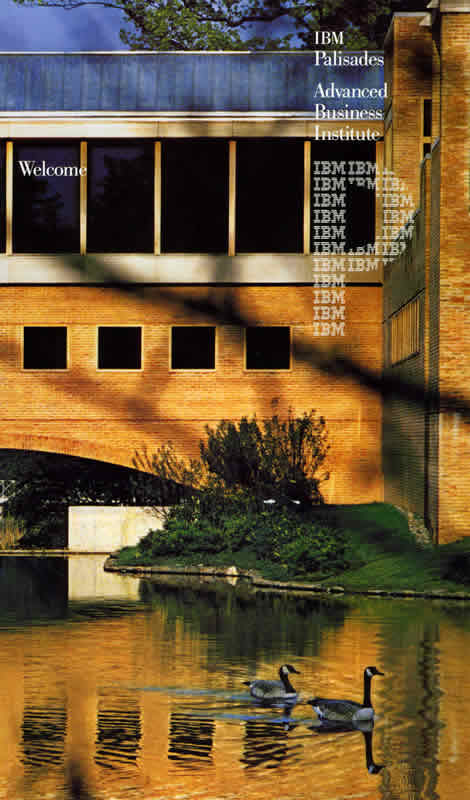
After the training in 1994, I became a consultant in the field for IBM, part of a Micromarketing Consulting practice led by Thom Henry in Dallas, Texas. By 1996, as IBM turned towards an industry alignment, this team became associated with a Consumer Driven Supply Chain business unit led by Ron Hovsepian in Waltham, Massachusetts. I led a proposal for a First-of-a-Kind (FoaK) project across IBM Research (led by Mark Wegman and Steve Abrams), IBM Consulting Group (led by Mike Albrecht) and IBM Industry Solution (led by Ron Hovsepian). This scope of the FoaK included Ian Simmonds at IBM Research, and consultants in the Object Technology Practice led by John Baker. This became the Seiad project, on System Envisioning technologies. Towards the end of 1997, executives cancelled the Seiad project, before IBM made commitments for customer engagements. The most visible artifacts on the Internet from that period are a 1998 OOPSLA Workshop summary, and the publication of the Architects’ Workbench technology in 2006. In hindsight, the FoaK in 1997 was extremely ambitious, and probably ahead of its time.
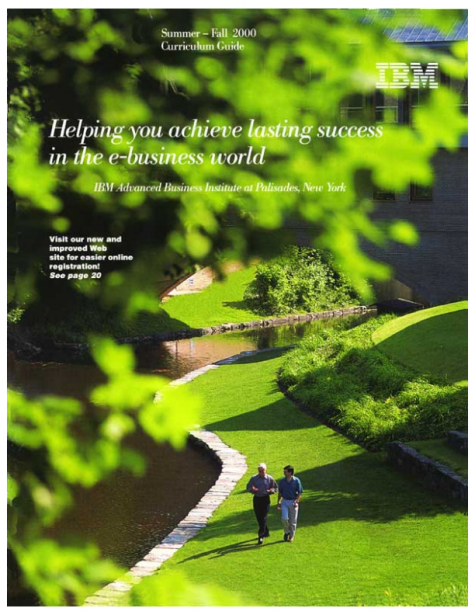
As the Seiad project wound down, I happened to be at IBM Palisades visiting Steve Haeckel. Since I had become available, he introduced me to Allen B. Barnes, the provost of the ABI. Steve was working on a book that would become Adaptive Enterprise: Creating and Leading Sense-and-Respond Organizations for Harvard Business School Press at the end of 1999.. If the book were to take off, IBM should have prepared a consultant capable of taking the ideas to market. In the way that IBM budgets work, Palisades didn’t have an open position (i.e. it didn’t have headcount), but was not spending up to its expense line (i.e. it had dollars). Through an intercompany transfer to IBM U.S. from IBM Canada, I became a candidate to disappear off the headcount of both organizations, as a temporary assignee to the Advanced Business Institute. As a formality, the teach team of Steve Haeckel, Bob Keiser, Marianne Kosits and Patrick G. Brown had me stand up in a classroom to demonstrate that I could teach. I passed.
Steve Haeckel put me on the path towards reading the system thinking of Russell Ackoff, and then attending the ISSS Atlanta 1998 meeting. For most weeks in 1998 and 1999, although my family and I lived in Toronto, I would regularly fly down either to Laguardia or Newark Airport, and spend the work week at IBM Palisades. In 2000, I would re-enter consulting, leading the pilot engagement of Adaptive Enterprise methods with the Partnership for a Drug-Free America.
In 2001, I had an assignment with the Net Generation Business, applying the Adaptive Enterprise methods to startup companies in which IBM had invested. I happened to be at IBM Palisades on September 11, 2001. On that Tuesday morning, we had just started a class when word of an airplane striking the World Trade Center halted proceedings. We watched on the big screen television, as the second aircraft struck the other tower, just across the Hudson River. This changed the world.
For 2002 and 2003, the 9/11 event changed the pattern of business travel in the United States, and around the world. Fewer people would travel to industry conferences and trade shows. Attendance at IBM Palisades event plummeted. Video meetings and web conferences would become more common. Without a continuing stream of executives seeking education, the reason-for-being of the ABI ceased. In 2004, the Advanced Business Institute wound down operations. Parts of the building were leased to other New York and New Jersey corporations, and Dolce rented space for corporate retreats and even weddings.
In February 2016, the property was purchased to become the HNA Conference Center. In September 2019, the Chinese investors were negotiating sale of the property to a private group from Brooklyn, but the deadline to close the deal passed in November.
While the IBM Advanced Business Institute is gone, the legacy of field research on management thinking on organization and information technologies in the field persists.
Sources
Abrams, S., B. Bloom, P. Keyser, D. Kimelman, E. Nelson, W. Neuberger, T. Roth, I. Simmonds, S. Tang, and J. Vlissides. 2006. “Architectural Thinking and Modeling with the Architects’ Workbench.” IBM Systems Journal 45 (3): 481–500. https://doi.org/10.1147/sj.453.0481.
Frederich, Mary Jo, and Peter Andrews. 2008. “Driving Innovation into The Marketplace: IBM’s First-of-a-Kind Program.” Research-Technology Management 51 (6): 7–12. https://doi.org/10.1080/08956308.2008.11657531.
Haeckel, Stephan H., and Richard L. Nolan. 1993. “Managing by Wire.” Harvard Business Review 71 (5): 122–32. https://hbr.org/1993/09/managing-by-wire
Haeckel, Stephan H. 1999. Adaptive Enterprise: Creating and Leading Sense-and-Respond Organizations. Boston, MA: Harvard Business School Press. [on Google Books] [on Amazon]
Hoffnagle, Gene F. 1993. “Preface.” IBM Systems Journal 32 (1): 2–3. https://doi.org/10.1147/sj.321.0002.
Lohr, Steve. 1992. “I.B.M. Joins Big Rivals In Business Consulting.” The New York Times, October 20, 1992, sec. Business. https://www.nytimes.com/1992/10/20/business/company-news-ibm-joins-big-rivals-in-business-consulting.html.
Matthews, Charles E., and Ralph Hodgson. 1998. “System Envisioning: OOPSLA 1998 Workshop Summary.” In Addendum to the 1998 Proceedings of the Conference on Object-Oriented Programming, Systems, Languages, and Applications, 0.31-A31. Vancouver, BC, Canada: ACM. https://doi.org/10.1145/346852.346964. Cached at http://coevolving.com/blogs/index.php/system-envisioning-oopsla-1998-workshop-summary/
Reif, Diana. 1989. “Welcome IBM!” 10964 The Palisades Newsletter, no. 115 (November). http://palisadesny.com/media/media/1989-11_115.pdf.



